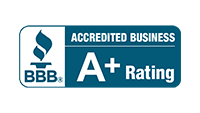
Key Performance Indicators (KPIs) are essential for measuring progress towards business objectives. However, setting and achieving your goals requires a strategic approach. In this blog post, we’ll explore how to set and achieve SMART KPI goals to improve business performance.
What are SMART KPI Goals?
SMART is an acronym for Specific, Measurable, Attainable, Relevant, and Time-Bound. SMART goals effectively set KPIs aligned with business objectives and achievable within a specific timeframe. Continue reading to learn more about the acronym.
Specific
KPI goals should be specific and clearly defined. Avoid vague language and set concrete targets that are easy to understand.
Measurable
KPI goals should be measurable so that progress can be tracked over time. This involves identifying metrics that can be quantified, such as revenue, sales, or customer satisfaction.
Attainable
KPI goals should be challenging but realistic. Setting unattainable goals can be demotivating for employees and may ultimately harm performance.
Relevant
KPI goals should be relevant to business objectives. Ensure the goals align with broader strategic priorities and support the company’s overall mission.
Time-Bound
KPI goals should have a specific timeframe for achievement. Following a timeframe ensures that progress is tracked over a defined period and helps to create a sense of urgency around achieving the goal.
How to Set SMART KPI Goals
Setting SMART goals involves several key steps. Here’s a step-by-step guide to getting started:
Step 1: Identify Business Objectives
The first step in setting SMART KPI goals is to identify business objectives. Examples include increasing revenue, improving customer satisfaction, reducing costs, or achieving other strategic priorities.
Step 2: Identify Metrics
Once you identify business objectives, the next step is to identify metrics that measure progress toward these objectives. For example, metrics such as sales, customer acquisition, or average order value may be relevant if the aim is to increase revenue.
Step 3: Define Specific Targets
KPI goals should be specific and clearly defined. Set concrete targets for each metric identified in step two. For example, if the objective is to increase sales, a particular target may be to increase sales by 10% over the next quarter.
Step 4: Assess Feasibility
KPI goals should be challenging but realistic. This means assessing the feasibility of achieving the targets set in step three. Factors to consider may include resources, timelines, and other constraints.
Step 5: Align with Business Objectives
KPI goals should be relevant to business objectives. This means ensuring that they align with broader strategic priorities and support the company’s overall mission.
Step 6: Establish Timeframes
Your goals should have a specific timeframe for achievement. This ensures that progress is tracked over a defined period and helps to create a sense of urgency around achieving the goal.
Step 7: Communicate Goals
Finally, it’s important to communicate KPI goals to relevant stakeholders. Communicate to employees who will be responsible for achieving the goals and other stakeholders who may be impacted by progress towards these goals.
Tips for Achieving SMART KPI Goals
Achieving SMART KPI goals requires a strategic approach. Here are some tips to help you achieve your goals:
-
Prioritize Goals
- Prioritize KPI goals based on their importance and impact on business objectives. Focus on the goals that will have the most significant impact on business performance.
-
Create an Action Plan
- Develop an action plan that outlines the steps needed to achieve each KPI goal. This plan should identify the necessary resources, timelines, and actions required.
-
Track Progress
- Track progress towards all your KPIs and goals regularly. Tracking involves monitoring performance against the targets set in step three and adjusting as needed.
-
Celebrate Success
- Celebrate success when goals are met. Celebrating wins can build morale and motivate employees to continue working towards other goals.
-
Provide Feedback
- Provide regular feedback on progress toward KPI goals. This includes positive feedback when progress is made and constructive feedback when targets are not met.
-
Stay Agile
- Be prepared to adjust KPI goals as business priorities change. This means regularly revisiting KPIs and goals to ensure they remain relevant and aligned with broader strategic priorities.
Conclusion
Setting and achieving SMART KPI goals is critical for improving business performance. By following a strategic approach, businesses can set specific, measurable, attainable, relevant, and time-bound goals. Achieving these goals requires prioritization, a clear action plan, regular progress tracking, and a willingness to adjust goals as business priorities change. With the right approach, businesses can use SMART KPI goals to drive performance and achieve success.
Contact us today to discuss how we can help you create SMART KPI goals and achieve success!





